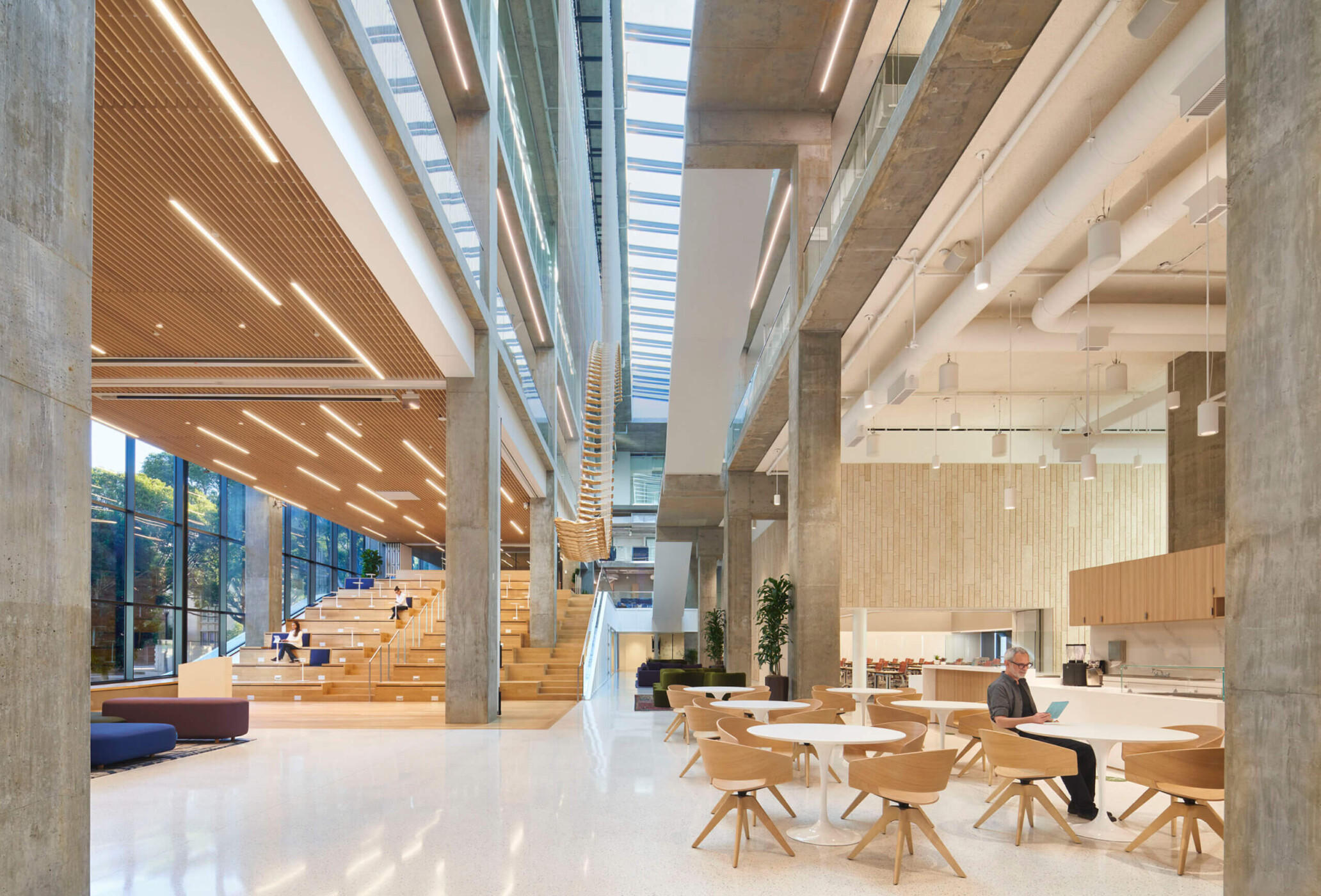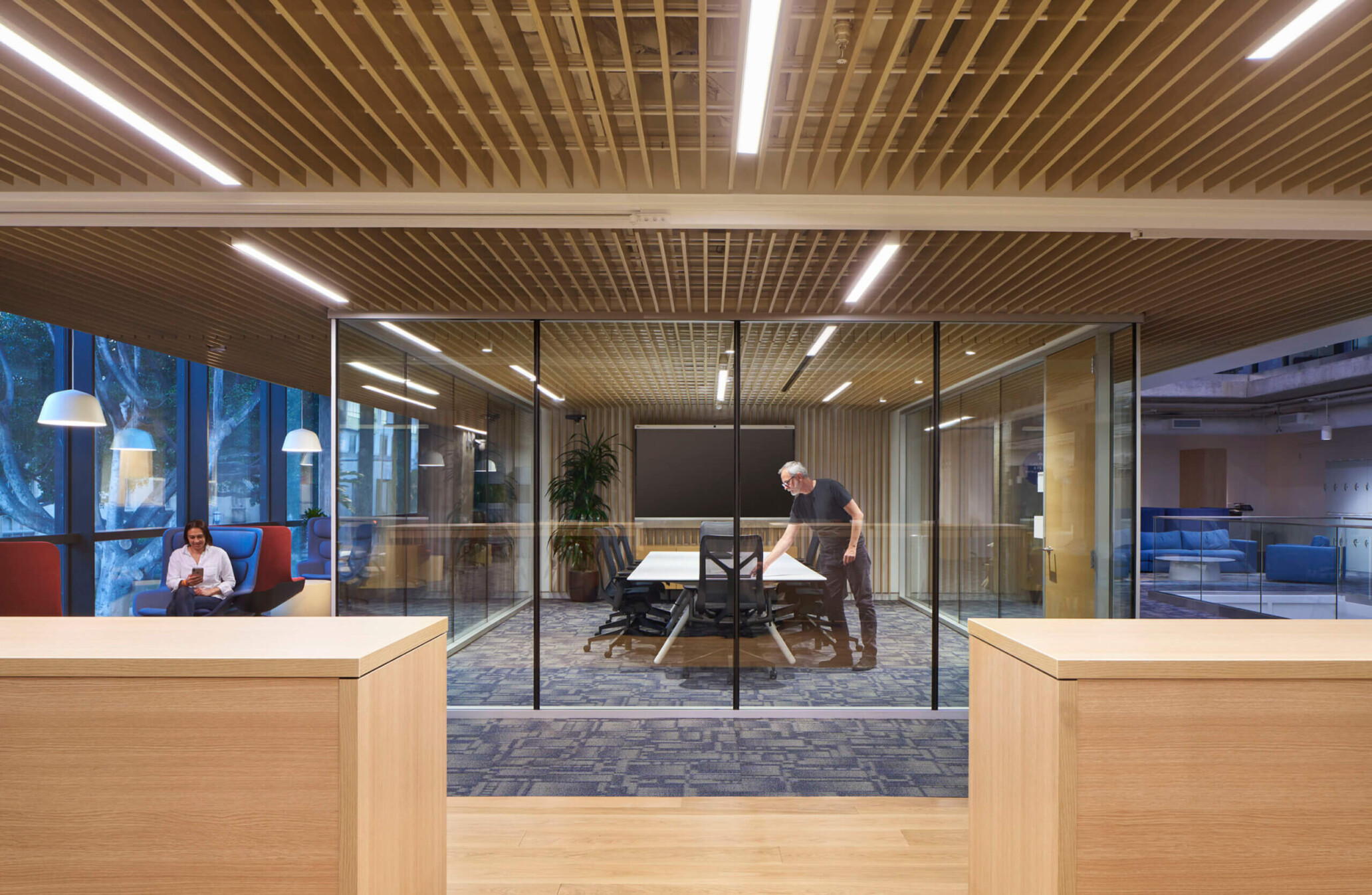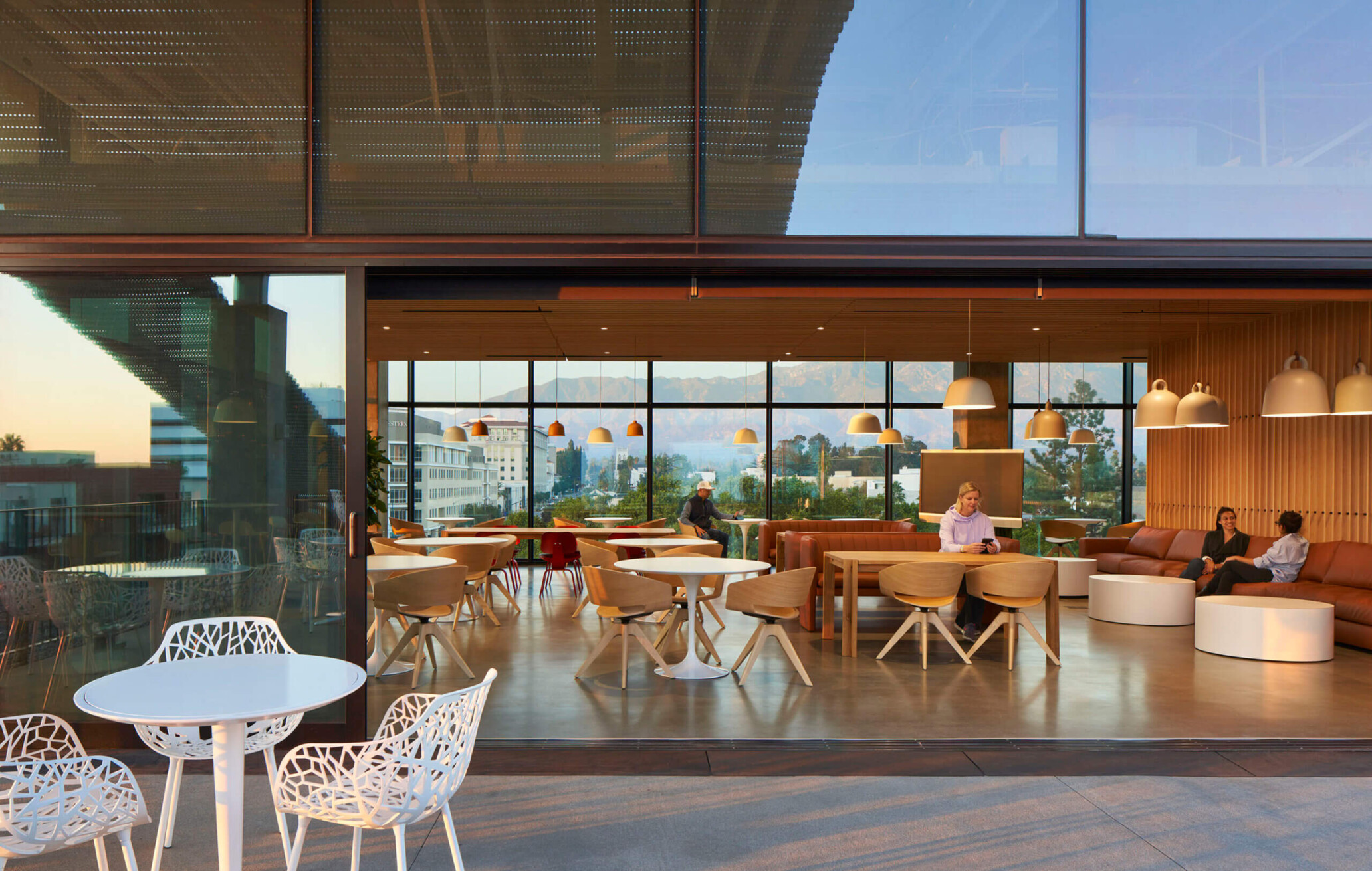We are excited to share the Kaiser Permanente Bernard J. Tyson School of Medicine has been named the top institutional project in the 2021 Rethinking the Future design awards.
The prestigious international awards program recognizes the leading projects and design firms dealing with global contemporary challenges heads-on – with continuous innovation and excellence. The full announcement about the School of Medicine and other winners can all be found online. Below is a full narrative for the dynamic project led by our Yazdani Studio.
Kaiser Permanente, one of the largest health care providers in North America, sought to do something completely novel – to create its own school to train physicians and other medical staff, unfettered by the traditional pedagogy of academic medical centers.
A dynamic space where they can provide a world-class medical education that ignites a passion for learning, a desire to serve, and an unwavering commitment to improve the health and well-being of patients and communities.

This unique opportunity, health system creating its own medical school, pushed the design team to reimagine the typology entirely. How does one envision, on a tight urban site, all the components needed for first-rate medical education?
The resulting design is an entire campus within a building. The 80,000 sf building houses simulation, flex classrooms, cafeteria, lecture hall, computer center, small group learning, collaboration zones, and outdoor recreation areas to create “the school of medicine as a laboratory.”
The school is designed to provide an immediate feedback loop between education and medical practice. Kaiser Permanente is unique in that they have a medical ecosystem that allows their students and faculty to bring what they learn in clinical practice immediately to school and impact education in real time.

This approach redefines medical education, preparing a new generation of physicians to influence positive change within the Kaiser Permanente system and in hospitals, homes, schools, workplaces and communities at large.
It also sets a new precedent for the future, blurring the lines between medical provider and educator, and making transformative medical education experiences possible in new ways. It raises the bar and should inspire and impact others for generations.
